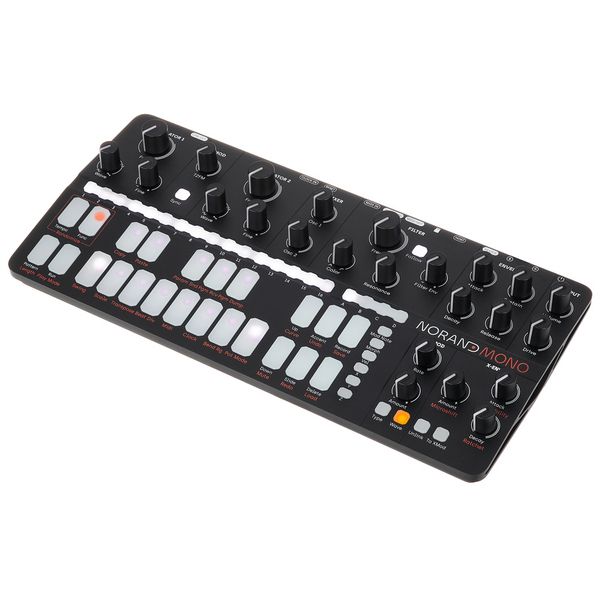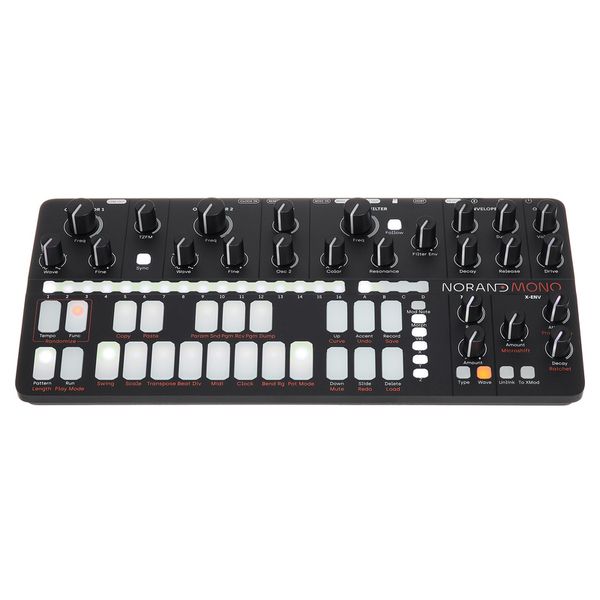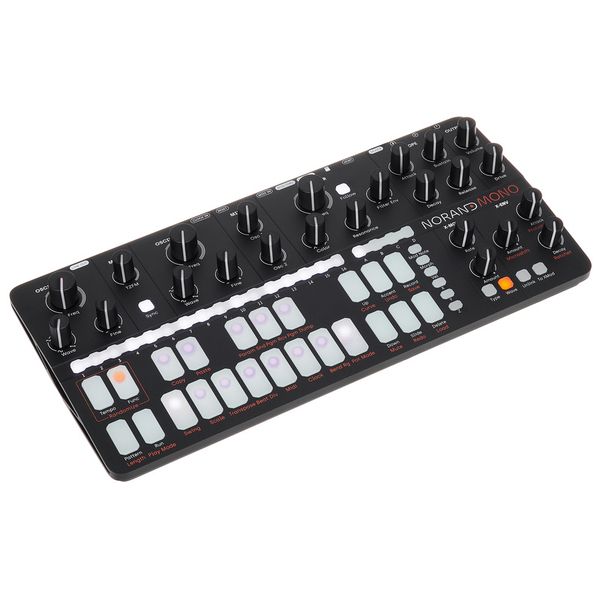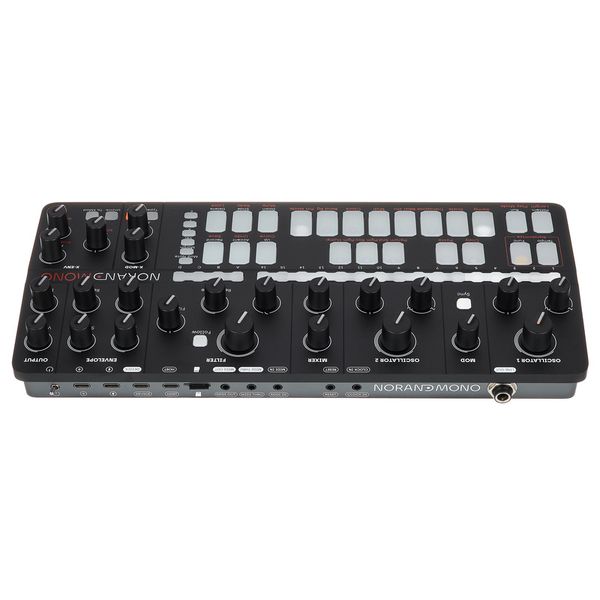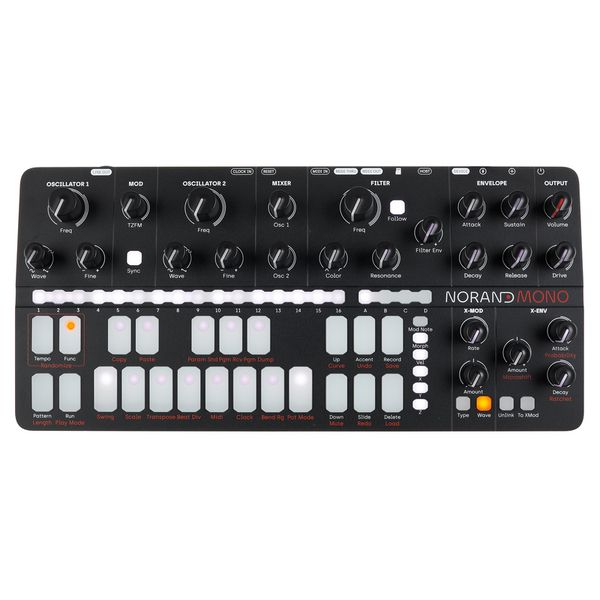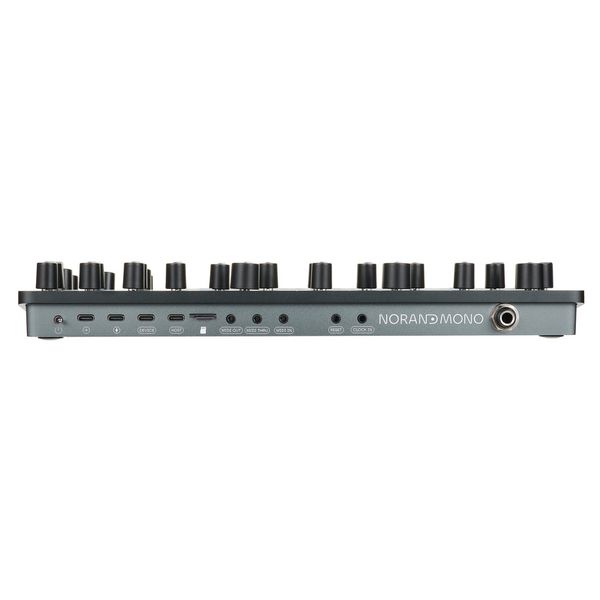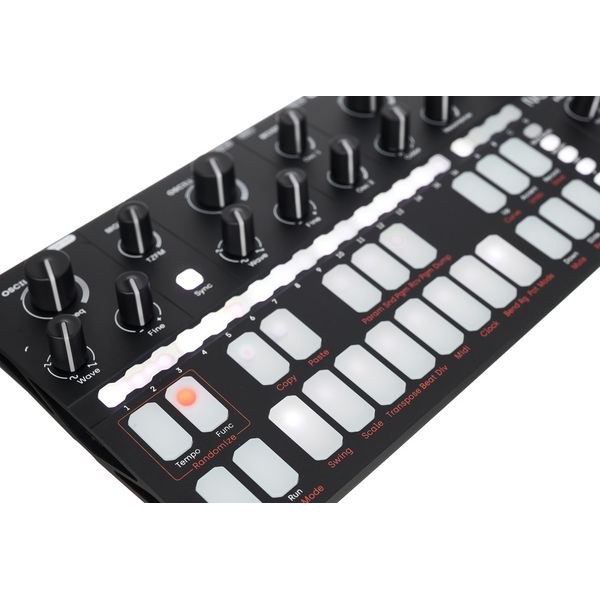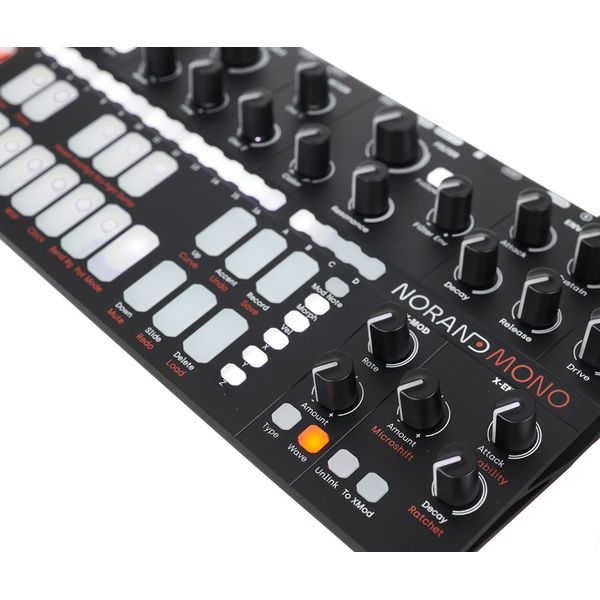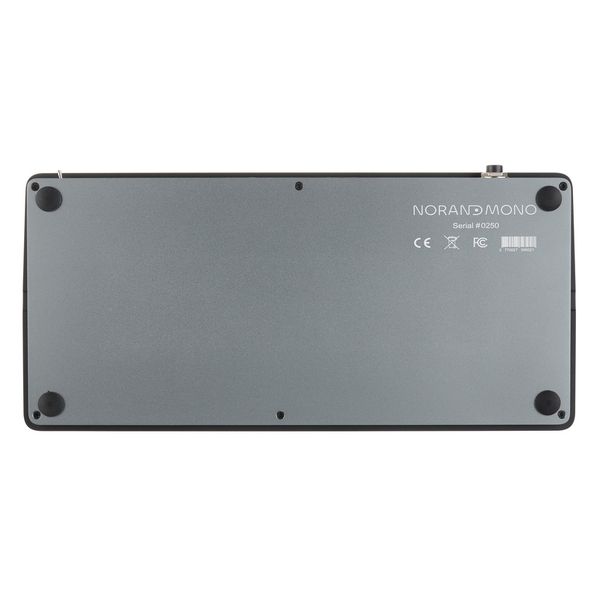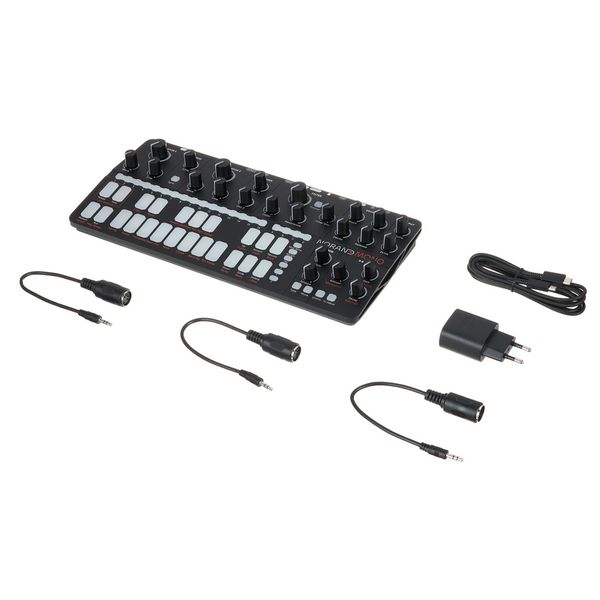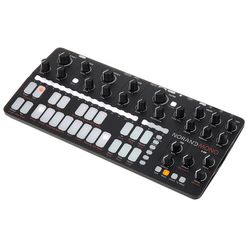Synthétiseur analogique monophonique avec séquenceur et fonctions de modulation
- Moteur de synthèse entièrement analogique
- 2 oscillateurs analogiques avec des formes d'ondes réglables en continu
- Modulation de fréquence Through-Zero
- Fonction Hard Sync
- Filtre Overdrive
- 1 filtre multimode 3 pôles
- Coloration du filtre réglable en continu
- 1 enveloppe ADSR
- Overdrive douce
- 13 enveloppes AD dédiées
- 20 modulateurs multimodes
- Modulateurs: 5 formes d'onde, réglages de type: Free/Synced/Audio-Rate, Audio-Rate anti-aliased, quantifié à OSC1, Free de 0,1 à 80 s
- Enveloppe: segment de déclin de 10 us à 20 s
- Automatisation: nombre illimité de projets sur carte SD
- 64 patterns avec mémoire de patch par projet
- Automatisation illimitée des paramètres par pattern
- 40 Mod-Notes par projet
- Séquenceur avec jusqu'à 64 pas par pattern
- Fonction Undo-Redo (jusqu'à 1024 actions)
- Diverses options de randomisation: Randomize Step, Parameter, Mod Note et plus
- 64 patterns avec mémoire de patch par projet
- 23 potentiomètres avec éclairage RGB
- 24 boutons lumineux
- Niveau de sortie max.: +15 dBu
- Impédance de sortie: 200 Ohm
- Mode d'économie d'énergie pour alimentation USB
- Alimentation: 5 V DC, 2 A
- Dimensions: 350 x 150 x 35 mm
- Poids: env. 1,6 kg
- Bloc d'alimentation, 3 adaptateurs MIDI (mini Jack stéréo 3,5 mm de type A vers MIDI 5 broches) et guide de démarrage rapide incl.
Connexions:
- 1 sortie audio principale sur Jack 6,3 mm symétrique
- 2 entrées Clock/Reset Eurorack sur mini Jack 3,5 mm
- 2 ports USB-C Host/Device
- MIDI In/Out/Thru sur mini Jack 3,5 mm
- Fente pour carte micro SD
- Port d'alimentation USB-C
Référencé depuis
Septembre 2023
Numéro d'article
569248
Conditionnement (UVC)
1 Pièce(s)
Format de l´appareil
Desktop
Nombre de voies
1
Module de synthèse
Analogique
Interface MIDI
1 entrée, 1 sortie, 1 Thru
Type de sauvegarde
Interne, micro SD
Port USB
Oui
Effets
Non
Arpégiateur
Non
Nombre de sorties analogiques
5
Sortie numérique
Non
Écran
Non
Extensions optionnelles
-
Extras
Design compact, modulation contextuelle
Afficher plus





